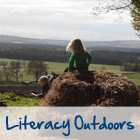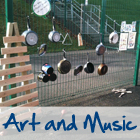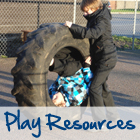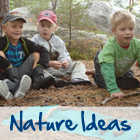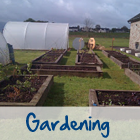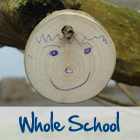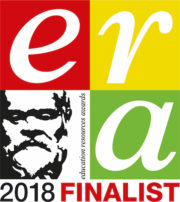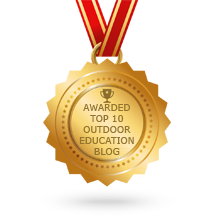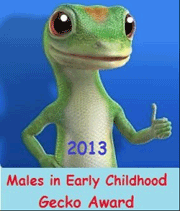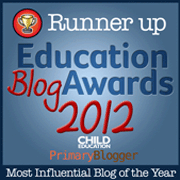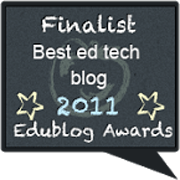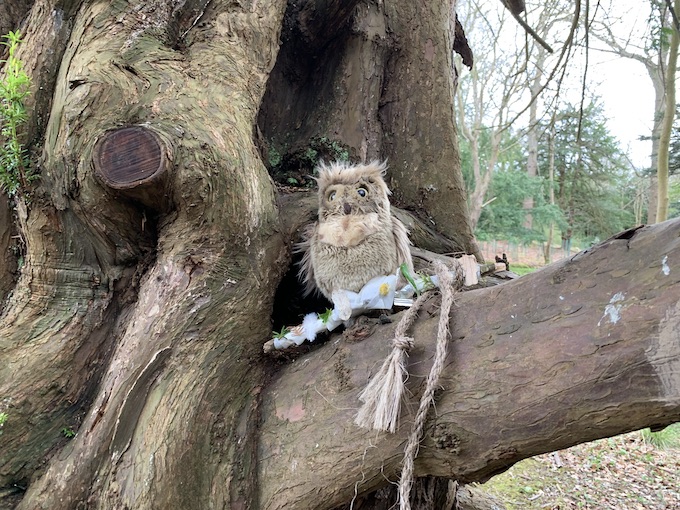
There’s almost 70 blog posts with ideas and suggestions to support you to develop your literacy provision outside, be this in the early years or primary school. Most are open-ended and can be easily adjusted to the level at which you work.
Note: for some visitors to this website, the photos in each blog post take an age to upload. They will appear. Be patient. Also some of the blog posts need updating. This will happen in due course.
The freebies
- Checkout the compilation of outdoor literacy resources, downloads and videos. Many are free to download.
Getting started
- 10 reasons why I teach literacy outside. Time to open your door to the possibilities. A few reasons for stepping outside as a primary teacher for exploring literacy. It’s definitely not just for early years classes.
- Let’s get writing outside. Lots of sensible tips and suggestions for beginning to write outside. Ditch the A4 clipboard and paper… so many better approaches… 🙂
- National Poetry Day: 10 ideas for creating poems outside. Plenty of practical suggestions for writing or reading poetry outside.
- 10 outdoor ways to celebrate World Book Day. Suggestions to help you use books outside with your class – suitable for all ages
- Reading books outdoors. Some practical suggestions, particularly suitable for early years.
- Circles – a literacy theme. An example of activities based on the concept of circles to give you a flavour of outdoor literacy and its potential.
- Leaf loving literacy activities. An example of a series of literacy activities using leaves outside
- Trolls, treasure and outdoor learning. This is a series of games to spark the fantasy element of what trolls are all about – as a springboard into literacy outside or in… useful for Viking projects!
- Literacy in the woods at the Secret Garden Outdoor Nursery. This post is a useful introduction for educators and parents wondering how literacy happens in a play-based context. It doesn’t involve sticking the alphabet on trees.
Reading and exploring books outside
- A red rose hunt for Valentine’s Day. An alternative and outdoor approach to supporting children to read this much-loved Rabbie Burn’s poem for a reason and work together to put the poem in order.
- A Harry Potter hunt. A useful trail activity that is easy to set up for older children to undertake and then solve the potion problem that Harry and Hermione faced before meeting Quirrell.
- A poetry walk at the Coombes School. A simple way to support a class to read and use their deduction skills to read and re-read a poem
- 9 considerations when choosing a children’s book about the outdoors or nature. We want our books to be fit for purpose outside as well as in. Let’s be conscious consumers and ensure our book provision is fit for purpose.
- I’m in charge of celebrations. Using a Byrd Baylor book to help children notice the little things that can be committed to memory or become embedded in the life and ethos of our nursery. This book is a useful springboard for many ages.
- Death, decay and new life. Death can be a tricky subject to discuss – but with outdoor examples and a good book, then this can be a helpful starting point with a real, relevant context.
- Story lines outside. Wonderfully simple approach to reading books outside using a washing line. Great for early years but also for older children to create and present stories to younger groups too.
- Back to school: 10 things you need to find out. Another reading for a purpose activity that involves exploring the school grounds and getting to know your new class.
- Re-using paper – origami seed packets. Great way to use newspapers, magazines or old book pages to store collected seed. Guerrilla reading!
- Repurposing books into seed packets. When you have old library and books that are no longer fit for purpose, then give them a new lease of life to store seeds.
- Reading outside with Fred the Ted. A simple outdoor activity to celebrate World Book Day. Where would Fred like to read in your outdoor space?
- The story of Fred the Ted. The value of creating little stories about outdoor events and activities and using the books to recall the experiences. Personalising the outdoor experience through books!
- 10+ Useful Fiction Books to Support Nature Play and Transition from Nursery to Primary 1. These books accompany a free download about nature play ideas. The aim is for you to have books and associated suggestions based upon the theme of the book. These are provocations rather than structured activities… follow your children’s interests and lead.
Writing and mark making outside
- Love outdoors. Show this on Valentine’s Day with a series of simple activities including writing a Tanka poem from the heart. Aimed at Level 1 or 2 in Primary School.
- What about the royal wedding? A good opportunity to link a public event to writing a diamanté poem outside.
- An Outdoor poetry workshop. A selection of poetry structures that work well with children outside.
- Snip, snap, snout! My story’s out. A lovely example of how to build a story with primary children outside by Catherine Heppenstall.
- Learning on your doorstep: ideas for developing writing outside. A feet practical suggestions along with a book review.
- Sketchnoting – capturing thoughts. This is a wonderful companion to journalling. Sketchnoting as a visual notetaker works well on paper or digital formats. I find child focus better when asked to sketchnote thoughts in addition to listening or talking alone. It works equally well outside or about outdoor topics.
- Garden labels of love. Making the act of labelling a garden or outdoor space a creative opportunity that ignites children’s imagination.
- Forming letters outdoors. Some practical hints and tips about ensuring your approach is relevant, suitable, makes the most of your environment and considers the developmental need of your children.
- Exploring collective nouns by creating photo mosaics. Looking for themes of objects outside and developing collective nouns to describe the group. Also useful for other collecting, sorting and categorising of features.
- Skitch those water wall designs. Using apps to annotate photos. Works well in a range of outdoor lessons and contexts.
- Group masking tape artwork. This is a natural approach to mark making with younger children, using available plants, mud and other easily available resources. Remember to invite children rather than expect each child to get involved and consider a relevant starting point that links to children’s prior experiences.
- Circle poems in action. An example of creating a circle poem spontaneously with a 3yr old based on his name and interests.
- Snow stencils and blood. The use of syringes and stencils outside as an approach to mark making in the snow.
- 10 ideas for mark making in the snow. Advance preparation is key. However the effort invested is worth it. Every snowy moment should be a celebration in the UK 🙂
- 15+ alternatives to using laminated sheets outside. Trying to move away from laminated resources? Here’s some suggestions for managing this outside with all the weather, mess and mud to manage as well.
Talking and listening outside
- Outdoor Thunks – Made to Make Your Brain Go “Ooh”, “Ah” and “Ouch!” This is a useful set of questions compiled by Ian Gilbert, creator of “thunks”. This can be helpful for challenging older children’s thinking about being outside.
- Outdoor journeys into language. A range of team building activities focused on the concept of journeys. Good for facilitating discussions without prompting.
- Holly – Finding out about traditional plants, customs and associated stories. Learning through oral story telling – so important yet often underrated as a form of literacy.
- The snowdrop story. An explanation of why snowdrops have the patterns they do and why they are one of te first plants to appear to mark spring. Useful, simple, oral story to tell.
- Not a stick! Making sense of metaphors. A bottom-up approach to learning about metaphor which begins with practical games and activities that the whole class can enjoy.
- Full stops outside. Practical activities that can precede written work around full stops.
- 10+ ideas for using puppets outside. Approaches that work well and suit many different ages.
- Metasaga – a brilliant place-based thinking framework for personal reflection in different ways on a local feature, space, place or walk. Developed by Kate Coutts. Suitable for primary and secondary schools.
Environmental considerations and literacy
- The Douglas fir and the Mice – what’s in a name? Exploring scientific and common names of flora and fauna can lead to valuable insights about their colonial discovery and thinking at the time as well as the latin roots of many plants.
- Wooden Cable Drums – Developing Physical and Literacy Skills Outside. Inspiration from Stramash Fort William about the use of a collection of cable drums and the benefits for developing children’s literacy skills.
- Making environmental print meaningful. A wonderful example of how to work with children on print that is personal and relevant to them yet has wider value and use within a nursery to welcome visitors.
- Beware! Extreme signage. This post shows the signage I observed around one hotel. What would your children find if they walked around your school grounds or a local area? Good for discussion about why we have signs, their purpose and hidden messages for older children. Also, if signage is negative, then how can we re-word more positively?
- The stone jetty ramblings. Morecambe sea front provides the ideal inspiration for enjoying word play, jokes, sayings and poems all based on a bird theme.
- A flock of words. Another post inspired by Morecambe’s sea front sculptures about taking a theme and creating accessible literacy for all to enjoy. Easy to adapt the concept to a school ground.
- A fish trail not a fishy tale. Think an alphabet hunt around your school could be a good thing? Then have a look at this creative example to ensure you and your class do the job justice.
- The Comedy Carpet: outdoor literacy at its best. You don’t need to visit, just use the concepts of word play, rhymes, known sayings, jokes to create a mosaic of words outside – great for Comic Relief or if your class is in need of a little light literacy relief!
- Literacy trails in outdoor spaces. These can happen in any space. Go micro! Go massive.
- Fibonacci sequence and nature. A mix of maths and literacy that help your class learn about this amazing number pattern and how it can be seen nature.
Resource-based literacy explorations
- 10+ ideas for using story stones outside. This is a mixed page with lots of suggestions for primary classes, not just early years.
- Story stones and thinking skills. The value of abstract designs and using the children’s own stones. Story stones need to be more than just nouns that limit the possibilities.
- Stones. The original blog post about using painted stones outside.
- Fairy gardens and literacy. A miniature world such as a fairy garden can be an ideal setting for children to create their own settings and narratives. Although the blog post is EY in focus, this is relevant for all primary ages too.
- Creating ongoing dialogue and change with children. The use of a teddy bear as a context for exploring literacy and giving children a voice to express their preferences and interests.
- Wooden spoons project. An interdisciplinary project that involves designing a wooden spoon character and then writing about it. Very simple and transferable.
Alphabet and letter work
- Alphabet mirror letters. One ASN class strung and hung these for another ASN class to find. A quirky challenge owing to the ability of the mirrors to blend into the environment.
- Letters from sticks. Using sticks with an ASN class to explore making letters outside. Requested by a child.
- Sticky letters. Use of double-sided sticky tape to create letters with children for using on a dry day outside. Completed with a small ASN class (I think the preparation would be too much for a regular size of class unless the children did the work of putting on the sticky tape following an outline).
- Introducing letters outside: creating letters from natural materials but with an extra twist.
Looking for more literacy resources and ideas
- Why not attend one of my webinars or outdoor training courses, listed on the home page… you get lots of additional handouts via a password protected resources.
- Buy my multi-award winning Dirty Teaching book.
Useful videos
Exploring Collective Nouns by Creating Photo Mosaics
Whilst attending the Real World Learning…
Snip Snap Snout – My Story’s Out
Just before the Easter break, I had the…
Fairy Gardens and Literacy
Recently I visited Westpark Nursery…
Beautiful Miniature Worlds
The potential & possibilities of mini worlds for children of all ages
Back to School – 10 Things You Need to Find Out
An outdoor activity designed to help a class settle in after the holidays
Literacy in the Woods at the Secret Garden Outdoor Nursery
Reading and writing are complex processes.
Learning on your Doorstep – Ideas for Developing Writing Outdoors
Outdoor writing activities and a review of Learning on your Doorstep.
A Fish Trail not a Fishy Tale
The Fish Trail shows just how creative a trail can be, enabling anyone to enjoy science, language, art, people and place.
Literacy Trails in Outdoor Spaces
Wherever you teach, the place has possibilities for trails of all sorts.
Creating On-Going Dialogue and Change with Children
Fred the Ted helps out.
I’m in Charge of Celebrations: Earth Day Book Activity
Earth Day and celebrations – are you in charge of them?
Beware! Extreme Signage
Instructions, warnings, ‘elf and safety – signs everywhere!
Reading Outside with Fred the Ted
The children are extremely kind and considerate of Fred the Ted’s requests.
Alphabet Mirror Letters
What happens with the alphabet mirrors outdoors?
Not a Stick! Making Sense of Metaphors
Sticks can can help children develop their imagination through the use of metaphor.
Outdoor Literacy Activity: Sticky Letters
The children are enjoying and responding to literacy outdoors.
The Comedy Carpet – Outdoor Literacy at its Best!
Doing literacy activities outside is no joke…
The Story of Fred the Ted
Fred the Ted provides an avenue into literacy.
Outdoor Literacy: Introducing letters
There are many multisensory activities which can help children recognise letters.
Circle Poems in Action
Children’s words can be used to create forms and patterns.
What about the Royal Wedding?
Kate and William are getting married.
Literacy – A Circles Theme
Outdoor literacy activities on the theme of circles.
A Harry Potter Hunt
A useful comprehension exercise with a bit of deduction thrown in for good measure.
Full Stops Outside
Taking punctuation lessons outdoors.
An Outdoor Poetry Workshop
Outdoor poetry activities for teaching literacy outdoors.
Reading Books Outdoors
Children will happily explore books outside.
Stones
Stones are a great outdoor learning resource.
Outdoor Journeys into Language
Journeys, micro-journeys and literacy activities for problem solving and exploring.
Trolls, treasure and outdoor learning
A series of outdoor activities around a troll theme – part of a Viking project.
Death, decay and new life
Autumn – the dying season – is beautiful.



